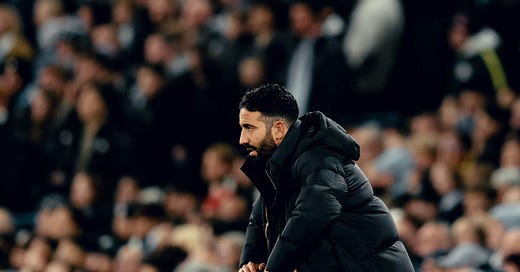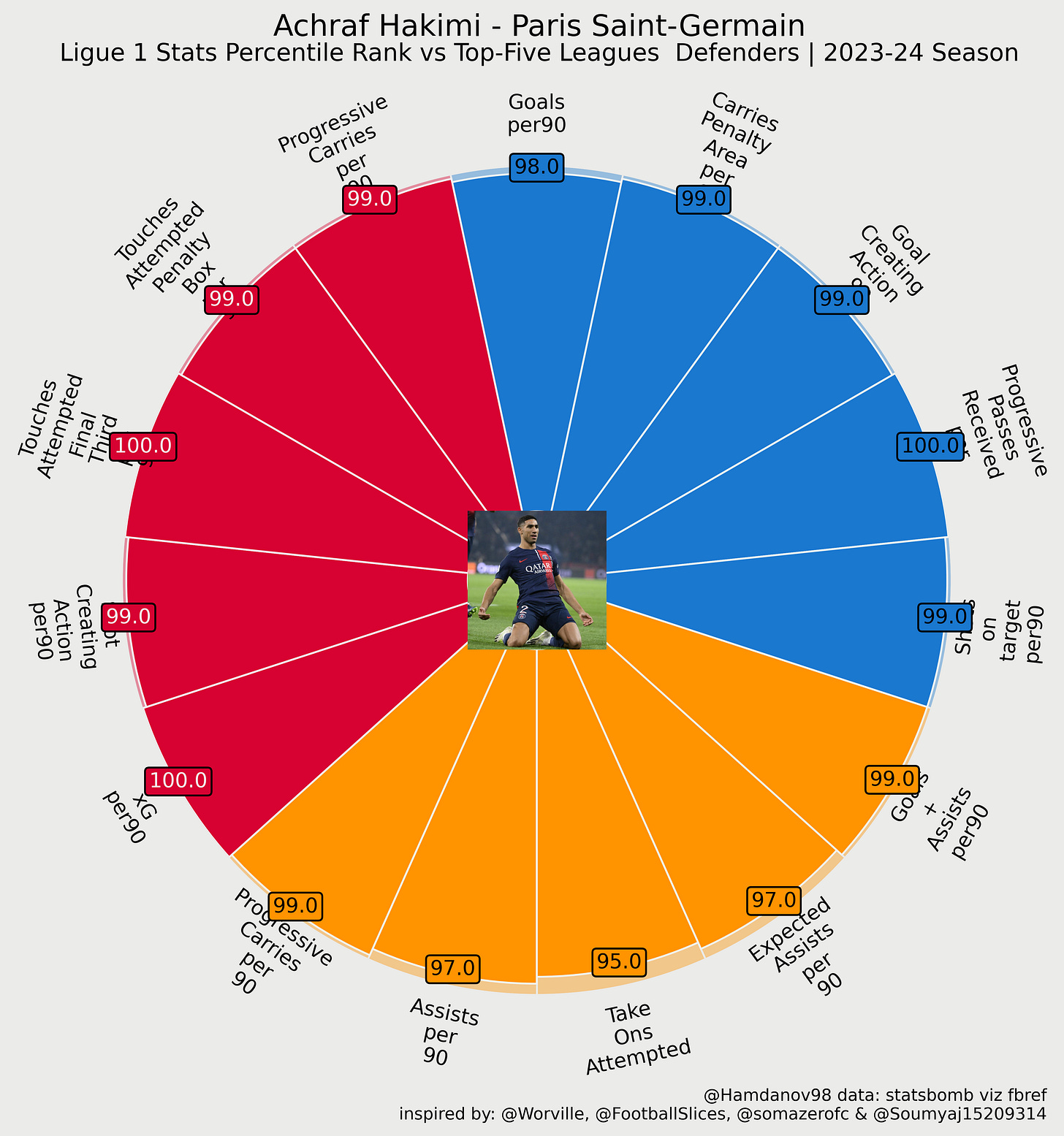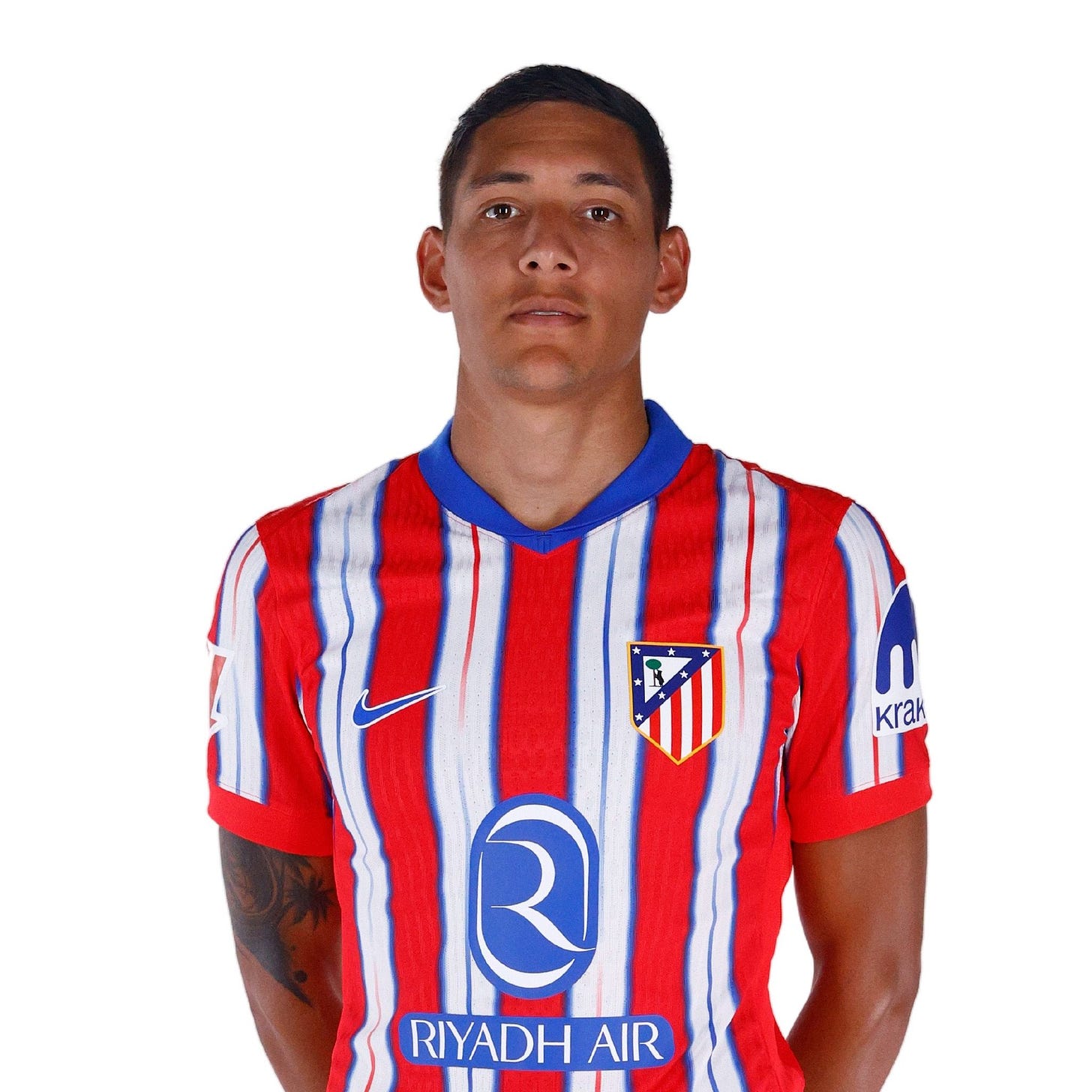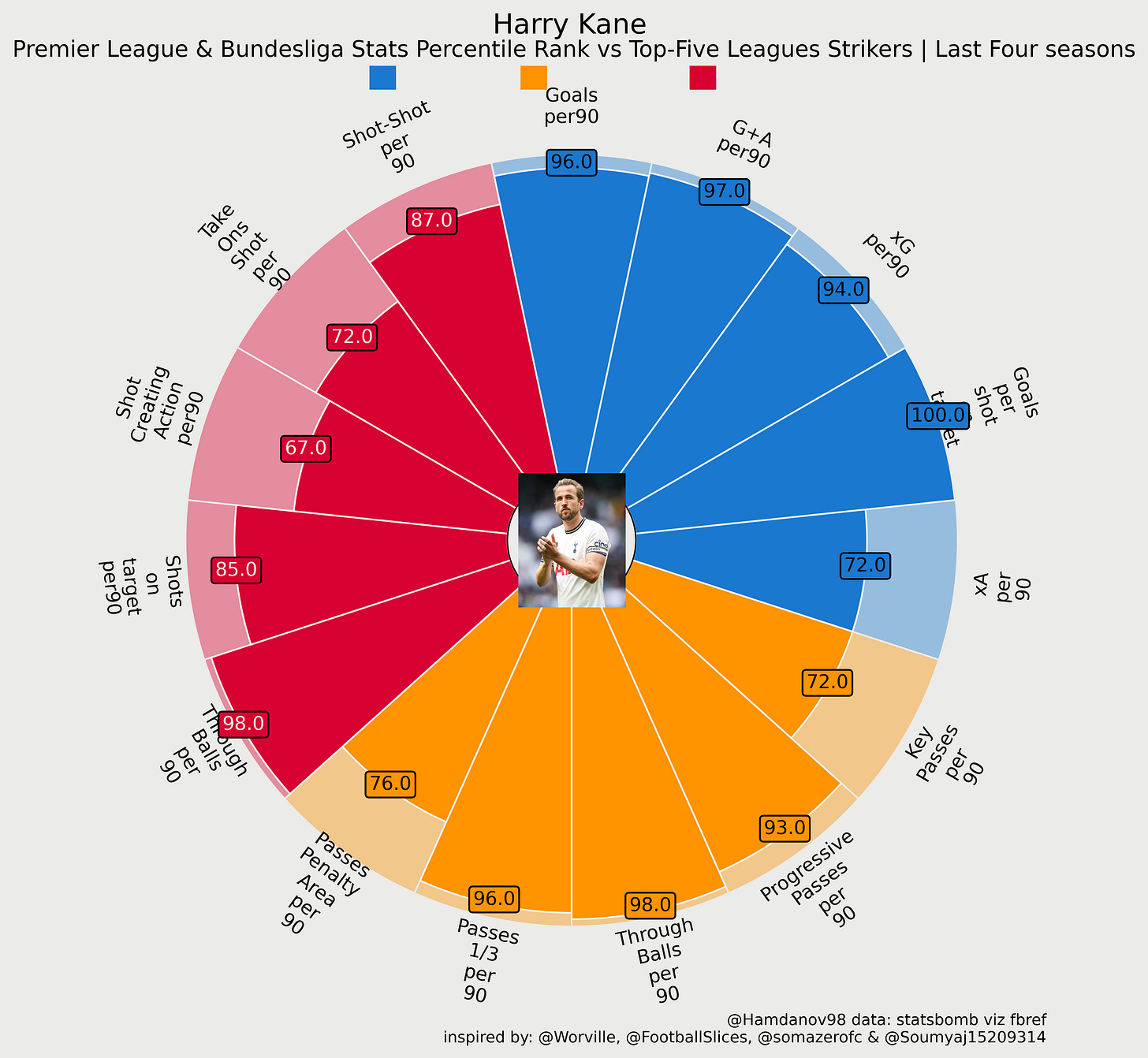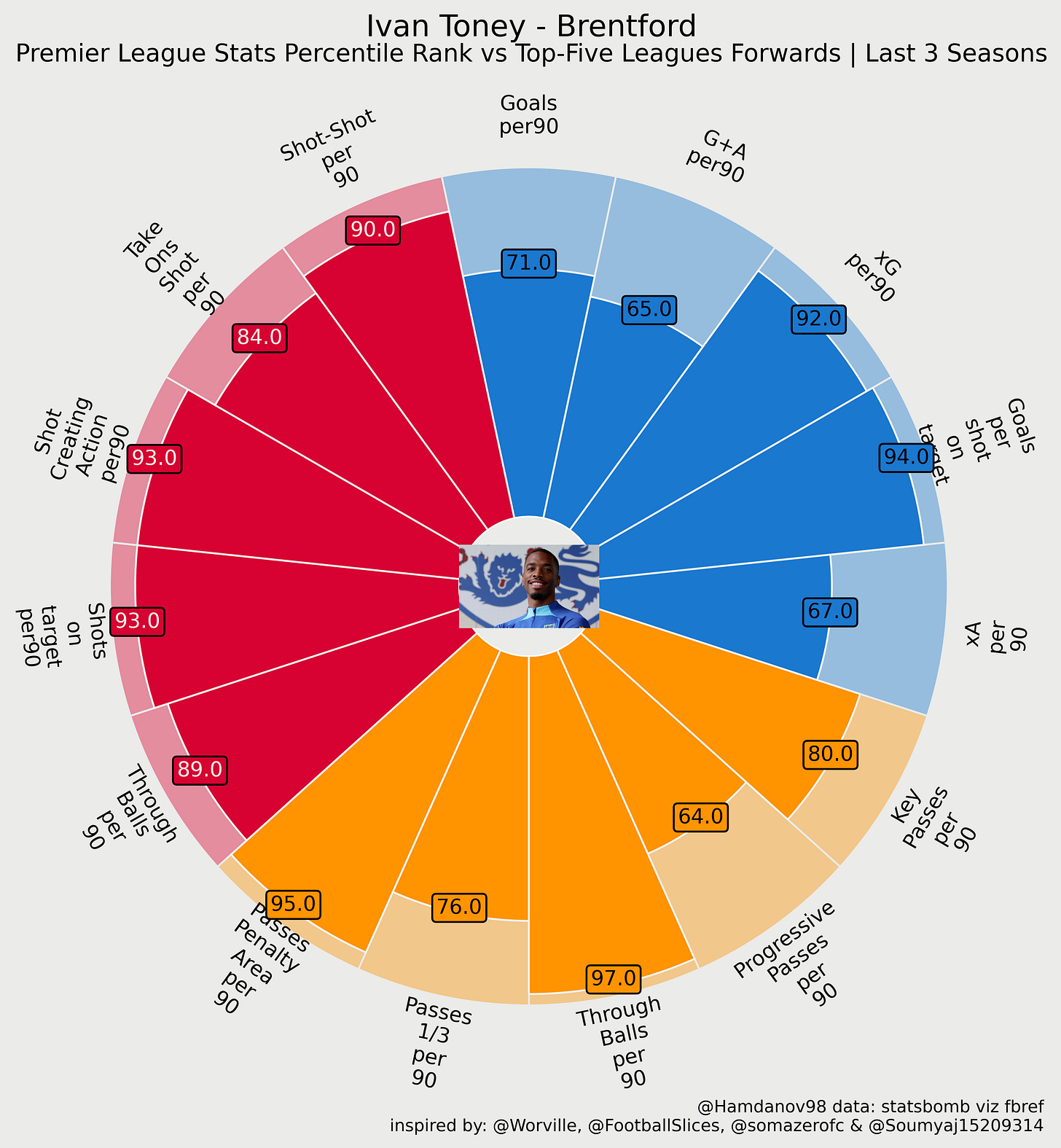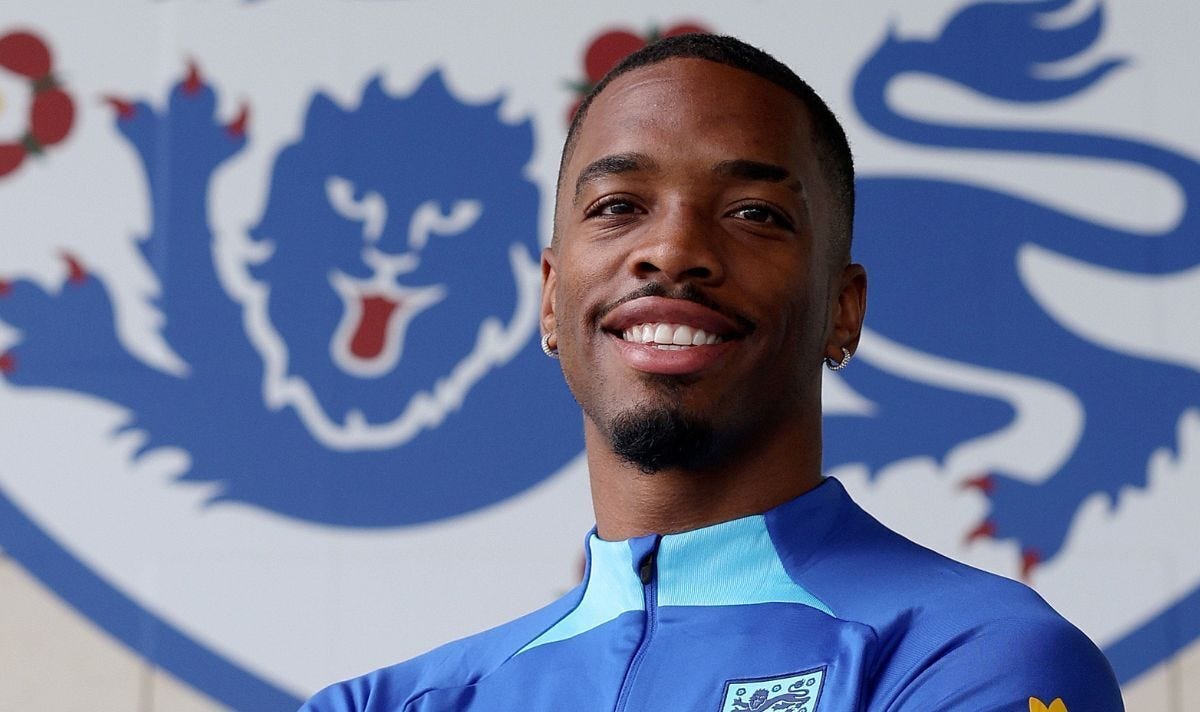Rebuilding Manchester United Under Amorim: A Data-Driven Tactical Overhaul
Finding the Right Profiles to Fit Amorim’s System and Bring United Back to the Top.
Introduction
Growing up, I never imagined Manchester United would fall this far. Year after year, just when it seems like they’ve hit rock bottom, they somehow manage to sink even lower. This season, they’re struggling to even crack the Premier League’s top half, and without a trophy, European football next season could be out of reach—potentially mirroring Chelsea’s disastrous 2022/23 campaign.
But amidst the chaos, there’s finally a glimmer of hope. United have brought in a system manager, something they’ve desperately lacked for years, and they’ve begun restructuring the club from the top down.
In my opinion, when a team is in crisis, hiring a tactical mastermind is the best way to rebuild. Rúben Amorim is exactly that—an elite coach with a proven ability to construct well-drilled, cohesive teams, regardless of the squad at his disposal. The challenge is massive, but with a few smart transfer windows, Manchester United can finally start moving in the right direction.
How I Approached Fixing Man Utd
For me, the biggest concerns in this Manchester United rebuild revolve around the wing-backs. Nothing is more frustrating for me than seeing a team successfully bypass the first pressing line, only for the wing-back to waste the opportunity—either lacking the pace to take on their marker or simply playing it backwards.
Dalot at left wing-back doesn’t seem like a viable option. The only game where he looked decent there was against Liverpool away, and that was probably more about Trent Alexander-Arnold having an off day rather than Dalot excelling. I believe Dalot would be much better as a right-sided center-back in a back three, similar to Mazraoui. Both have strong ball-carrying skills, but they aren’t elite in one-on-one situations, making them less effective as attacking wing-backs.
The wing-back positions need upgrades on both sides. In Amorim’s system, these players are key to stretching the pitch, beating defenders, and delivering in the final third. Without quality options, United will struggle to create width and break down compact defensive structures.
A proper striker is also a necessity. United need a clinical, well-rounded forward who can thrive in a system-based approach, offering both link-up play and goal-scoring consistency. Without that, their attack will remain inconsistent and over-reliant on individual brilliance.
The goalkeeper situation is another pressing concern. While I appreciate Onana’s proactive style, it’s becoming clear that he struggles in this United setup. His mistakes have been costly, and considering how crucial the goalkeeper is in a back 3, this position needs to be reassessed.
United have some solid pieces, but for this rebuild to succeed, the wing-backs, striker, and goalkeeper positions require immediate attention.
As always, we’ll approach this using our Moneyball method—not following media narratives, but instead focusing on smart, data-driven recruitment. While my priority is young talent, I won’t ignore valuable market opportunities. Let’s dive into the numbers.
Results
1- Fixing the Wings
1-1 Right Wing Back:
For this position, as a biased Moroccan football data enthusiast, all roads lead to Achraf Hakimi—the best in the world in his role. Given his elite performances, I used him as a benchmark to identify the best right wing-back for Amorim’s system, and I doubt many would disagree with that approach.
Looking at the numbers, it’s clear that Hakimi has reached new heights under Luis Enrique at PSG. But since he’s not a realistic option for United, I turned to the data to find the next-best alternative.
The results? An elite group of players emerged, with Denzel Dumfries standing out as a top choice. However, he recently renewed his contract and is thriving at Inter, making him an unlikely signing. Another name that intrigued me was Silvan Widmer, whom I previously suggested for Napoli under Conte (though he has since moved away from a back-three system).
Ultimately, my pick is the same player I identified as a potential Trent Alexander-Arnold replacement in my Liverpool piece: Nahuel Molina. He ticks all the right boxes for United—technically secure, experienced in a back-three, and defensively reliable. Given United’s need for stability, tactical intelligence, and attacking contributions from their wing-backs, Molina is the standout choice.
I have no doubt that he would be an upgrade for Manchester United and would hit the ground running. Any club in search of a secure, balanced wing-back should be looking at Molina, and for United, he is my clear pick to solve their right wing-back dilemma.
1-2 Left Wing Back:
The left wing-back role is another area Manchester United must address, and when discussing the best in the world at that position, one name stands out—Federico Dimarco. His relentless energy, pinpoint crossing, and intelligent runs in behind make him a nightmare for defenders. (Imagine if he had been at Inter alongside Hakimi—they would have dominated both flanks!) While Nuno Mendes is another top-tier option at PSG, Dimarco remains the gold standard for a modern left wing-back.
When analyzing the numbers, my reaction was simple: Oooof. His output is elite, and using these metrics, I set out to find the best possible solution for United.
A strong pool of candidates emerged, but after filtering out expensive options and right-footed players, the standout choice for me was David Raum. The RB Leipzig left-back is an absolute machine—he thrives in 1v1 situations, delivers high-quality crosses, and adds an extra attacking dimension. While his defensive positioning can be questioned at times, in a back-three setup, his offensive strengths far outweigh his weaknesses.
With Raum bombing forward on the left and Molina providing balance on the right, United’s attack would have newfound width and unpredictability. One thing is certain—this addition would add goals to United’s system, something the team has desperately lacked in recent years. With Bruno Fernandes feeding through-balls into Raum’s overlapping runs, United could finally unlock the full potential of their wing play.
David Raum is my pick for Manchester United’s left wing-back solution.
2- Fixing the Goalkeeper Issues
Never in my wildest dreams did I expect André Onana to struggle as much as he has at Manchester United. When the club sealed the deal with Inter in the summer of 2023, it seemed like they had finally secured a proactive goalkeeper—one who could invite the press, build from the back, and help United become the best transition team in the world, as Ten Hag envisioned. On paper, it was the perfect plan. In reality, it went horribly wrong.
While I have a soft spot for goalkeepers and believe they need time to settle, it’s becoming clear that United need a more secure option—one who may be a slight downgrade in build-up play but more reliable between the posts. For this, I used Alisson as the benchmark—the best goalkeeper in the Premier League for years.
The numbers speak for themselves. At times, Alisson single-handedly prevented 10+ goals a season, essentially earning Liverpool crucial points. While he’s comfortable on the ball, he rarely takes unnecessary risks. Using his profile as the gold standard, I analyzed possible replacements for United.
It’s poetic to see Ederson at the top of the list—a true rivalry between Brazil’s finest. With an unlimited budget, Mike Maignan would be the obvious choice—he’s everything a modern goalkeeper should be. However, concerns over his age and injury history make the decision tricky. Yann Sommer also stands out—he replaced Onana at Inter and has been thriving ever since. Irony at its finest.
Ultimately, my choice is Gregor Kobel.
Kobel caught my eye last season—not just with his elite shot-stopping, but also with his commanding presence and leadership. At 27, he’s entering his peak years and would be an excellent fit for the Premier League’s physical demands. While he shares some of Onana’s proactiveness, he offers a clear upgrade in key goalkeeping fundamentals, even if he isn’t as strong in build-up play.
Kobel is my pick for Manchester United’s goalkeeping solution.
3- Fixing the Striker Issues
For me, Harry Kane is the best all-round striker in the world—no debate. He has everything you’d want in a forward and more. For years, it felt like he was destined for Manchester United, while in 2021 when he pushed for a move to Man City. In 2023, he handed in a transfer request, and a move to United seemed logical. Even Ten Hag later admitted Kane was the main target, but Daniel Levy’s impossible demands made the transfer unfeasible. Instead, United settled for Højlund, who has done well but isn’t delivering Kane-like numbers, while Zirkzee was never the pure goal-scorer United needed.
And looking at Kane’s numbers, it’s clear just how much United missed out in 2023. Now thriving at Bayern, with his age and long-term contract, it’s safe to say that a move to United isn’t happening. So, using Kane’s profile as a benchmark, who should United target now?
On a previous piece, after analyzing Kane’s profile, Alexandre Lacazette stood out as my top alternative, while Niclas Füllkrug was another solid option—both ended up performing well. But for United’s current system, I believe a different approach is needed.
My choice: Ivan Toney.
Currently playing for Al Hilal in Saudi Arabia, Toney is in his prime, a proven Premier League goal-scorer, and an England international. His physicality, technical ability, and knack for goals make him the perfect fit for a back-three system. While prying him away from Saudi Arabia’s financial power won’t be easy, Manchester United is still an attractive destination, and Toney might find the challenge of leading United’s attack too tempting to ignore.
It still baffles me that no top European club signed him for free last summer. He’s the complete package, and if United make the move, I’m confident he’d hit the ground running at Old Trafford.
Toney is my pick to fix Manchester United’s striker problem.
My Ideal Line Up for Manchester United
Now that we’ve analyzed Manchester United’s key issues and identified the necessary upgrades, it’s time to piece everything together in Amorim’s preferred 3-4-3 system. Using my data-driven approach, here’s my proposed lineup—balanced, structured, and built to compete at the highest level:
The back four looks locked in for years to come—a solid foundation that can genuinely compete for titles. I can already picture it: Kobel claims the ball, the three defenders drop in to support him, and they all share a group hug after grinding out another three points on the road to silverware.
The wing-backs, while not the biggest names, bring exactly what’s needed—energy, technical ability, and the perfect balance of composure and speed. They can stretch the pitch, break defensive lines, and carry the ball forward with confidence, adding dynamism to the team’s structure.
The midfield could be a concern, but Ugarte, having already played under Amorim, could be a revelation in this system. Mainoo is simply a joy to watch, offering control and progression beyond his years. Ahead of them, Amad and Bruno will be the wildcard duo—helping to overload the midfield, drifting wide when needed, and feeding the attack with creativity and intelligence.
And then there’s Toney, leading the line—not just as a goal-scorer but as a complete striker, capable of holding up play and bringing others into the game. His physicality, movement, and technical quality make him the ideal focal point for this system.
This squad feels balanced, structured, and ready to compete.
Conclusion
Manchester United’s struggles in recent years have stemmed from a lack of tactical identity, poor recruitment, and structural instability. With Rúben Amorim at the helm, the club finally has a system-focused manager who can implement a clear, cohesive style of play. But to make his 3-4-3 system work, the squad needed key reinforcements—and that’s exactly what we’ve outlined using a data-driven approach.
From Gregor Kobel providing security in goal to the dynamic wing-back duo of Molina and Raum, every piece of this puzzle is designed to fit Amorim’s tactical demands. The Ugarte-Mainoo partnership brings balance and control, while Amad and Bruno add creativity and fluidity in attack. And leading the line, Ivan Toney offers the perfect blend of goal-scoring ability, physicality, and hold-up play.
While no rebuild happens overnight, this squad provides a strong foundation for United to re-establish themselves as a force in both domestic and European football. The potential is there—the question is whether the club fully commits to this vision and executes it correctly.
What do you think of this lineup? Would you make any changes? Let me know your thoughts!
Code and Implementation
For those interested in the technical details, you can find the complete code for this project on my GitHub repository.
Call to Action
If you're interested in football analytics or data science, I encourage you to check out the full project on GitHub. Feel free to experiment with the code, apply it to your favorite team or other struggling teams, and share your findings. Let's continue to push the boundaries of football analysis together!
Enjoy the content, and I'll see you on the dugout!
Support My Work and Join the Journey
Support the journey and take your first steps into football analytics! Visit my Payhip store for exclusive resources designed to kickstart your path to becoming a top-tier football analyst.
Embrace the process, it’s in the learning journey where your true potential shines. Your support not only helps you grow but also allows me to keep creating valuable content for the community. Together, let’s shape the future of football analytics

